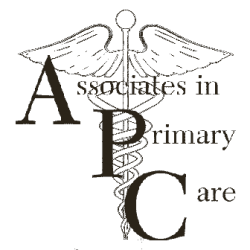What can I do to help my migraine headaches?
There are only a few proven reasons and a few proven preventative things that migraine suffers can do to improve their condition.
Magnesium supplements:
Magnesium supplements have been clinical shown to lessen migraine headache attacks and to lessen the severity of the attacks. Magnesium supplement are available over the counter in the vitamin section of your store. The specific magnesium supplement if Magnesium Oxide there are store brands called Slow-Mg or Beelith. Pick any supplement and take one tablet twice a day.
Iron Supplements:
Most migraine suffers are women and due to menstruation and heavy menses can predispose women to migraine headaches. The best solution is to supplement an individual’s iron intake. The typical ways to increase iron intake are to: Increase the amount of red meat in your diet, increase the amount of green leafy vegetables in your diet such as spinach or kale. An individual can also take an over the counter iron supplement such as Feosol or Slow Fe. Unfortunately iron supplementation can lead to constipation. The simple solution to this is to take a stool softener such as Colace or to change your iron supplement to Ferrosequels which contains the stool softer. For better absorption of the iron supplement you can also take a Vitamin C supplement of 500mg. There also prescription supplements that can be prescribed such as Nufera or Corvite- Fe.
Caffeine supplements:
Caffeine can help an acute migraine but can predispose an individual to caffeine withdrawal headaches. Ideally migraine suffers should restrict their coffee or tea or caffeinated beverage intake to no more than 12 ounces per day. The use of caffeine containing pain relievers should be restricted to no more than 6 tablets per day and no more than 2 consecutive days. The reason for this is to lessen the chance of caffeine withdrawal headaches which can be misinterpreted as migraine headaches
Chiropractic Manipulation:
Studies have shown that certain manipulations of the neck can lessen the recurrence of migraines. Ideally this is a more specialized type of chiropractic care and the patient should inquire about the chiropractor’s specialty in this field and all patients must have an x-ray of their neck prior to the procedure and the procedure should not be done in individuals over the age of 50.
The use of medications for the treatment of migraine headaches are divided into two types: PREVENTATIVE and TREATMENT.
PREVENTATIVE MEDICATIONS:
1. Beta Blockers
This were one of the first identified medications to prevent migraines. The brands used include: Inderal and Corgard.
2. Tricyclic Antidepressants:
Elavil and Pamelor.
3. Anti-seizure agents:
Topamax, Depakote and Lamictal.
4. Calcium channel blockers:
Verapamil
5. Botox:
This is a series of multiple injections into the scalp. This procedure is done is an individual has failed all preventative medications.
6. Immunotherapy:
These will be intramuscular or subcutaneous injections into the arm either monthly or every 3 to 6 months. These drugs are pending FDA approval and will be available at the end of 2018.

Treatment:
1. Triptans:
These have been the most successful in the treatment of acute
2. Migraine headaches and include:
Immitrex, treximet, and relpax
3. NSAIDS:
These include ibuprofen, advil, motrin, and aleve.
4. Steroid/Motility agents:
Typically this is reserved for patients that are refractory to previous agents. This is the combination of steroid such as Decadron plus a drug called Reglan taken three times a day for 3 days.
5. Older agents that are no longer available in the United States but available in other countries:
Ergotamine and Migrainol
About us
Internal & Adolescent Medicine
Diplomates of the American Board of Internal Medicine
